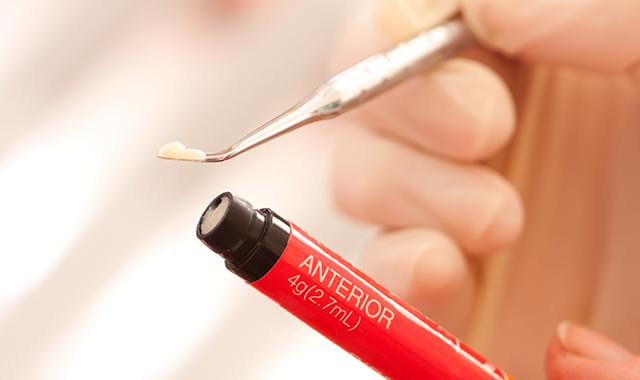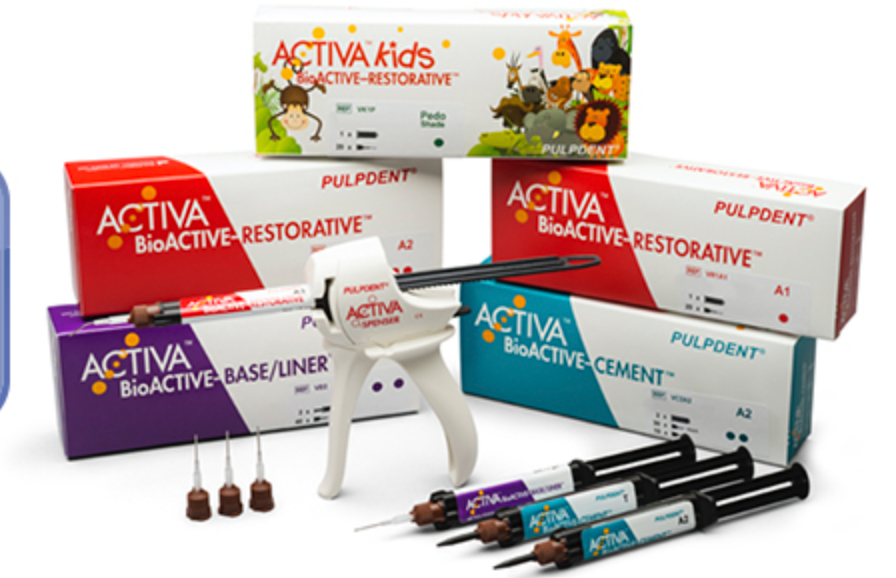How dental composites have changed over time

Dental composites have been a restorative material since the middle part of the 20th century. In the early ’60s, Dr. Rafael Bowen was the first to discover that chemically treating silica particles would prepare their surfaces to bond with a polymer base (Bisphenol A-glycidyl methacrylate, bis-GMA) when cured to create a strong restorative material.
However, the early composites, which were called “white fillings” in the vernacular of the day, did not have the depth and breadth of application that today’s dental composite restorative materials do. Nor were they as popular or durable as amalgam fillings at the time. It would be at least another 10 years before dental composites enjoyed widespread use by dental practices.
However, times have changed, and the dental composite materials have also. Improvements in filler technology and translucency mean that dental composites today have improved mechanical properties and the esthetics of which early developers of white fillings could only dream. Also, the resin component has changed some, too, reducing polymerization shrinkage and the problems it can cause. In addition, bonding systems improved, too, which has extended the lifetime of composite restorations considerably.
When Peter Auster, DMD, FACD, started in dentistry in 1980, there were two composites he remembers on the market, Adaptic (Johnson and Johnson) and Concise (3M). Dr. Auster was attending the University of Pennsylvania School of Dental Medicine at the time, and he said that the composite you used had a lot to do with where you studied.
“Different schools use different composite. I went to Penn at the time, and they were exclusively using Concise,” Dr. Auster says. “Concise was an interesting composite. It filled spaces, held very nicely, and was pretty strong, but it was extremely rough and virtually unpolishable.”
These early composites were macrofills, meaning the particle sizes inside the coupling agent are plentiful and were known for their strength and durability. Dr. Auster says it was not until the late 1980s or ’90s that composite materials polished well. These composites had smaller particles and were called microfills and they were popular for work on anterior teeth.
“Many of those microfills are still on the market because they are beautiful, and you can polish them nicely,” Dr. Auster says. “They can mimic teeth far better than any previous material. That was something that the Adaptics of the market could not do.”
However, a problem with those microfills is that they were weak. Their lack of mechanical properties made them inadequate for the posterior teeth. Moreover, Dr. Auster says their strength on the incisal edge of a tooth is questionable and many dentists would use a macrofill underneath a layer of microfill for increased strength.
Composites moved to microhybrids in the ’90s, which provided the esthetics of microfills and the strength and durability of macrofills. Microhybrids addressed concerns that dental composite restoratives were not appropriate for the posterior. The first hybrids had some problems, per Dr. Auster, but the materials improved as the decade wore on, becoming stronger and easier to polish.
Then, with the turn of the millennium, the nanohybrids emerged. These were improved versions of the hybrids with tiny particles that would band together to mimic large particles, making them stronger than microhybrids.[i] Furthermore, the resins began using silorane bases to reduce polymerization shrinkage, which led to many challenges for restorative outcomes and longevity. Dr. Auster says you could at last comfortably use dental composites for virtually anything.
“It was an era of specialization. Our armamentarium began including low viscosity flowables and cements; high viscosity core materials, and many textures of general composites,” Dr. Auster says.
To read more about the History of Composites, please click here.
Starting in 2010, manufacturers introduced some exciting materials improvements. Dr. Auster says every product was leapfrogging over the other. While the changes were small for the most part, manufacturers were making significant improvements in areas like improved performance in ambient light and better handling than before, as well as creating less sticky materials.
“One product wasn't a whole lot different than the product that came before it, but there were some cool changes that came out during that period,” Dr. Auster says.
He says the number one change in his mind was the introduction of bioactive products by Pulpdent with ACTIVA BioActive Restorative. Per the Dental Clinics of North America, this generation of composites not only replace the missing tooth volume but also work to remineralize and serve as antibacterial agents in restorations.[ii] These characteristics help the materials replace lost mineral, fight off recurrent decay, neutralize acid and repel proteins, as well as suppressing biofilm growth and acid production. Moreover, these materials are often showing low toxicity to other cells, much like the resins in use in many dental composites, and also protect the dental pulp, as well as encouraging a third layer of dentin formation.[iii]
To read more about Bioactive Dental Composites in the Dental Clinics of North America, please click here.
“I am sure probably in the next five years that every single company will have something that's either called bioactive or bioceramic,” Dr. Auster says.
Pulpdent has a full line of bioactive restoratives.

Another area that he sees improving today and for the future is that every company is working on handling. He says if you look at their ads, it’s the first feature they mention.
“Companies now speak with pride about product ‘ease of use’ and they mean it!” Dr. Auster says.
One contributing significant improvement over the years per Dr. Auster is the fact that there are less ambient light problems. Dr. Auster remembered about seven or eight years ago, the light in his office would set the material on the tooth before he had a chance to cure it with the curing light.
“It was mind-boggling,” Dr. Auster says of the ambient light issues. “But they've suddenly discovered how to deal with ambient light a whole lot better than they used to. I can put the material in a tooth, and ten minutes later, it is not set, which is great.”
Also, Dr. Auster sees that products are not sticking to instruments like they once were.
“We used to need to dip an instrument into an unfilled resin or constantly dry off the tip. But I find that with the better composites, you don't need an unfilled resin because they don't stick to the instruments anyway,” Dr. Auster says, adding “composite instruments have improved as well. This is a ‘golden age of composite dentistry’.”
Also, heating the material improves the properties of this generation of composite, per Dr. Auster, which is something he did not like to do in the past. However, heating composite materials makes them softer and smoother. They behave like a flowable when you first put them on the tooth. Then, as the material begins to set, they harden somewhat so you can mold them.
“Theoretically, they flow better into the nooks and crannies,” Dr. Auster says.
However, if you ask Dr. Auster, the most incredible innovation to enter the marketplace in dental composites from the last 30 years is in the area of shade matching.
“The initial products had one color years ago. Then, they went to five and then up to ten. Then, some companies were forcing us to buy 36 shades. Of course, by the time the product cycle was over, half of those shades were hardened in our closets, and we had to throw them out when we finally needed them,” Dr. Auster says.
Today’s products are moving in a new direction, getting away from adding colors to create shades and working with the chemistry to have shade matching built-in to the composite. Dr. Auster thinks that all the manufacturers are already moving in the direction of fewer colors and products that are more compatible with the body. In other words, fewer shades and healthier products that will allow fluoride, phosphates, and calcium to diffuse back and forth between the product and the tooth itself.
“There are other companies that are following Pulpdent’s lead and coming out with products that are ‘dynamic’ for the lifetime of the material as opposed to passive products,” Dr. Auster says, “and I think that's going to be a theme as time goes on."
References
[i] Lavigne, Courtney. “Dental Composites: Types and Recommendations.” Speareducation.com. Web. 13 December 2018. Web. < http://www.speareducation.com/spear-review/2017/01/dental-composites-in-2017-what-to-look-for-and-what-to-get>.
[ii] Zhang, Ke et al. “Bioactive Dental Composites and Bonding Agents Having Remineralizing and Antibacterial Characteristics.” Dental clinics of North America vol. 61,4 (2017): 669-687. doi:10.1016/j.cden.2017.05.002
[iii] Ibid.